#pacific northwest orchid
Explore tagged Tumblr posts
Text

Parasitic orchid
#orchid#forest#nature#beauty#photographers on tumblr#artists on tumblr#original photographers#original photography#photography#aesthetic#Washington#pnw#westcoastbestcoast#art#vsco#pacific northwest#explore#travel#cottagecore#naturecore#grandmacore#p
178 notes
·
View notes
Text


Pacific Coralroot
#artists on tumblr#original photographers#original photography#hiking#pacific northwest#nature#pnw#washington#nikon#orofeaiel#pacific coralroot#macro photography#plants#orchids#naturecore#cottagecore#forest finds
81 notes
·
View notes
Text



I led a lovely afternoon guided nature tour at the Cutthroat Climb and Teal Slough trails at Willapa National Wildlife Refuge! It was a nice break from the mayhem of packing the moving truck with my furniture and whatever else we can fit in there. There's still a lot to be done, but we're making good progress, and will haul things to Portland Sunday. Wish us luck!
Also, I'd love to make some plans for some tours once I get settled in in PDX, so if you've been wanting to book me for a private tour, drop me a PM!
#nature#forest#old growth forest#western red cedar#Lactarius#rattlesnake orchid#orchids#mushrooms#fungus#fungi#PNW#pacific northwest#native plants
19 notes
·
View notes
Text
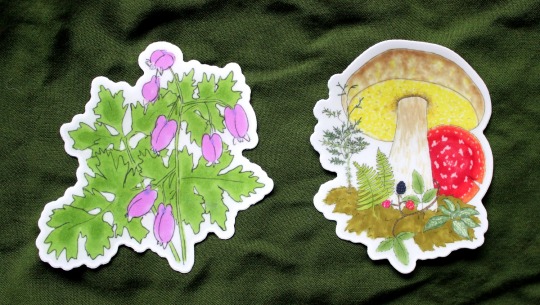
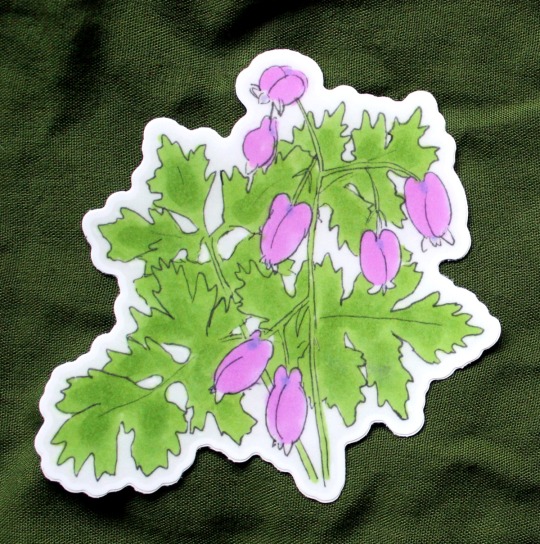
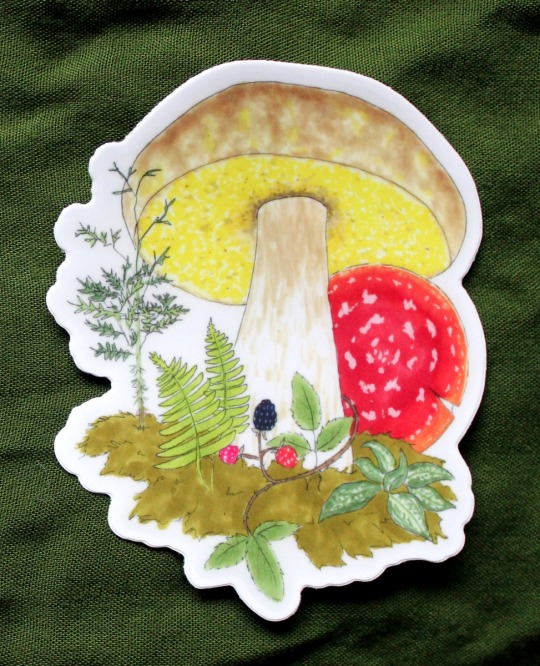
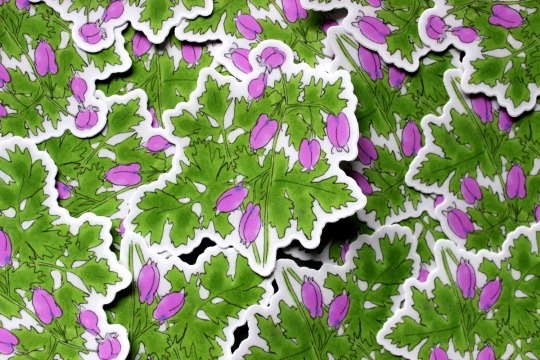
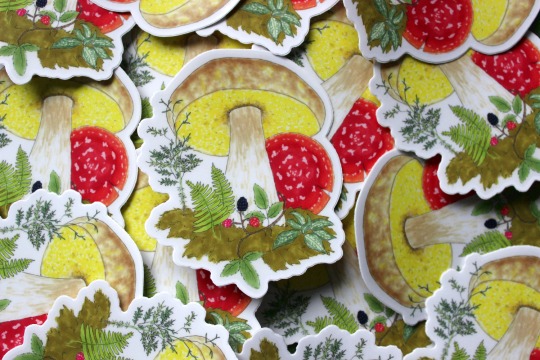
Hey, I just put a couple more sticker designs on Etsy! One is a portrait of Pacific bleeding heart (Dicentra formosa), one of my favorite native wildflowers here in the PNW. The other features an array of fungi and plants, to include king bolete (Boletus edulis), fly agaric (Amanita muscaria), western hemlock (Tsuga heterophylla), trailing blackberry (Rubus ursinus), western sword fern (Polystichum munitum), and western rattlesnake orchid (Goodyera oblongifolia).
You can find them, along with all of my nature-themed stickers at https://www.etsy.com/shop/thegreenwolf?section_id=43697433
#nature#stickers#mushrooms#fungus#fungi#flowers#wildflowers#plants#PNW#Pacific Northwest#native plants#cottagecore#naturecore#nature aesthetic#fly agaric#Amanita muscaria#boletes#ferns#bleeding heart#orchids#moss#forest
9 notes
·
View notes
Text



Hi I’m 🔮༉‧₊˚🕸 Katie ਏਓ ∙ 🕷‧₊˚𖦹
my interests include: my interests include horror, dragons, elves, vampires, werewolves, faeries, sirens, skulls, alice: madness returns, skyrim, the legend of zelda, animal crossing, lord of the rings, game of thrones, house of the dragon, harry potter, anything fantasy related. halloween anime, twilight, twin peaks, ginger snaps, jennifer’s body, queen of the damned, charmed, buffy the vampire slayer, sabrina the teenage witch, supernatural, texas chainsaw massacre, silent hill, the shining, the crow, the munsters, oddities and anything macabre or strange, teeth, anatomy, video games, many forms of art, books, writing, comics, guitar, gloomy and rainy days, seahorses, jellyfish, and marine life in general, wolves, bats, sci-fi, goth and ethereal music, 90’s grunge, nu metal, mythology, abandoned houses, hiking, graveyards, flora & fauna, morbid science, 90’s fashion, witchy things, the colors purple & periwinkle, gothic architecture, kurt cobain/nirvana, alice in chains, mazzy star, the band HIM, korn, slipknot, acid bath, type o negative, evanescence, lana del rey, killswitch engage, rob zombie, deftones, the birthday massacre, mushroomhead, the cure, diva destruction, lacuna coil, cradle of filth, switchblade symphony, swords and other fantasy weaponry, crystals, potions, mushroom foraging, cosplay, psychology, true crime, lilies, orchids, poppies, cannabis, foggy forests, the pacific northwest, washington state, salem massachusetts, & so sooo much more✨
#kh#me#fairy goth#gamer#spooky#goth gf#goth#gothic#goth girls#metalhead#gamer gf#gamers of tumblr#halloween enthusiast#goth aesthetic#gothic aesthetic#grunge girl#fairy#fairycore#fairy grunge#vamp goth#vampire goth#purple aesthetic#bats
130 notes
·
View notes
Text
Production is going wonderful, especially given that I have started school this week and this roleplays world is being entirely done by one person! The general environment has been chosen, and rules and expectations are being written out, as well as the general sections of the discord getting set up!
I do have one FINAL question for the lot of you, though!
The general environment that's been chosen is rainforests and cloud forests, biomes that exhibit a lot of rain, dense vegetation and moisture, and fogs and mists at higher elevations!
My question is, would you rather it be set in a tropical rainforest + cloud forest combo? Or a temperate rainforest + cloud forest combo?
Tropical rainforests are hotter and more humid year round, and tend to contain bromeliads and orchids that grow on the trees! The different layers (canopy, mid canopy, understory, etc) are more pronounced. These are found closer to the equator. These are less likely to have a coastal section for Clans to settle on, but are more likely to have higher elevated grounds for a clan to settle! Example of these are the Amazon Rainforest, or the Andean Cloud Forest!
Temperate rainforests are cooler while maintaining a general level of humidity, and while lacking the bromeliads and orchids, still features a lot of plants such as mosses, lichens, and so on. There is more definite seasonality to these. These are found further north or south of the equator. These might also feature redwood forests, and are more likely to include a coastal environment for a Clan to establish themselves on! Examples of these are the Pacific Northwest rainforests!
I am leaving this for the public to vote on as both are uniquely interesting biomes that I'd like to explore, and I can't really decide which one exactly I'd like to focus on!
2 notes
·
View notes
Text
Lines Written in Oregon
Vladimir Nabokov
Esmeralda! now we rest
Here, in the bewitched and blest
Mountain forests of the West.
Here the very air is stranger.
Damzel, anchoret, and ranger
Share the woodland’s dream and danger
And to think I deemed you dead!
(In a dungeon, it was said;
Tortured, strangled); but instead –
Blue birds from the bluest fable,
Bear and hare in coats of sable,
Peacock moth on picnic table.
Huddled roadsigns softly speak
Of Lake Merlin, Castle Creek,
And (obliterated) Peak.
Do you recognize that clover?
Dandelions, l’or du pauvre?
(Europe, nonetheless, is over).
Up the turf, along the burn
Latin lilies climb and turn
Into Gothic fir and fern.
Cornfields have befouled the prairies
But these canyons laugh! And there is
Still the forest with its fairies.
And I rest where I awoke
In the sea shade – l’ombre glauque –
Of a legendary oak;
Where the woods get ever dimmer,
Where the Phantom Orchids glimmer –
Esmeralda, immer, immer.
Annotations
Title. In Oregon. VN rented an apartment in Mount Ashland in the summer of 1953, where he wrote Lolita and hunted butterflies in the local woods.
1. Esmeralda. A butterfly or moth. Several species of moth or butterfly share the species name esmeralda/-us, or are commonly called “emerald”, but it seems clear to me that this is a mythical green butterfly that reminds Nabokov of one he found during his boyhood. Cf Speak Memory, Ch. 6, in which a butterfly flew (in VN’s imagination) from Russia to North America, “and southward along the Rocky Mountains- to be finally overtaken and captured, after a forty-year race, on an immigrant dandelion under an endemic aspen near Boulder.” “Esmeralda” recalls Victor Hugo’s gypsy, Lucette, called "our Esmeralda and mermaid" in Ada, Esmeralda and Her Parandrus from Look at the Harlequins, and Gerald Emerald from Pale Fire.
3. … West. Cf LATH, Part 4.1 on rediscovering Russian landscapes in the Rocky Mountains: “I spent what remained of the summer exploring the incredibly lyrical Rocky Mountain states, getting drunk on whiffs of Oriental Russia in the sagebrush zone and on the North Russian fragrances so faithfully reproduced above timberline by certain small bogs along trickles of sky between the snowbank and the orchid.”
5. Damzel, anchoret. Damzel, Cf The Blessed Damozel by Dante Gabriel Rossetti. An anchoret is a religious recluse.
11. coats of sable. Other examples of heraldic language in Nabokov include the obvious Bend, Sinister; in Pale Fire, the crest of King Charles and the multiple appearances of a “heraldic butterfly, volant in arrière, sable, a bend gules”; Nabokov’s family crest in Speak Memory; The Blazon, a poem from Poems and Problems, in which: “I adopted the blazon of exile: on a field of sable a starry sword.”
12. Peacock moth. The Great Peacock Moth Saturnia pyri is the largest moth in Europe.
17. L’or du pauvre. French, poor man’s gold.
20-21. Latin lilies… Gothic fir. Metonyms for the southern France and Russia of VN’s youth, respectively. Lilies are the symbol of France. Cf VN’s poem Provence, a Russian poet in a French setting: “What bliss it is, in this world full of song,/ to brush against the chalk of walls, what bliss/ to be a Russian poet lost among/ cicadas trilling with a Latin lisp.” Also parallels the European languages used herein, ie French and German. Russian is notable in its absence.
26. L’ombre glauque. French, pale green shade.
29. Phantom Orchid. Endemic to the Pacific Northwest, the Phantom Orchid Cephalanthera austiniae is a species of orchid whose entire body is white.
30. Immer, immer. German, always.
5 notes
·
View notes
Quote
“Doctor Strange?” One of receptionists poked her head in. “Oh, good! We got a delivery for you. Flowers.” Stephen blinked when she brought in a single, red orchid, planted in a tasteful, ceramic pot. He took the flower from her and opened the card. ‘Found you.’ - TS “And,” The receptionist continued. “There are more.” Stephen frowned and said, “More? How much more?” “Er, the entrance is full of them. The delivery man didn’t give me a name. He only said that you would know who the sender was.” “What the…what am I supposed to do with that many flowers??” Stephen exclaimed. “That douchebag!” Christine snickered beside him, which he didn’t appreciate. “Look on the bright side: it’s sweet. And expensive.” “He wouldn’t dare send me something cheap—not if he knew what was good for him.” “Of course not.” Stephen could also do without her smug condescension. That was his purview. “We’ll place them in tasteful spots around the ICU. Liven up the place a bit.” “Strange!” Fuller shouted as he entered the room. Stephen blinked. “Whatever it was I probably did do it. But we both know you’re not going to fire me so let’s not dwell on the past.” “God you’re insufferable,” Nic muttered. “Flatterer.” “You are a miracle worker, is what you are! I just arranged the delivery for three brand new, cutting edge MRI machines to completely replace the ones we have,” said Fuller as the rest of the room burst out into applause. “Can we still take a bat to the crappy one?” Someone called from the back. “No, sadly. But if you want to give it a discreet kick before Thursday I can’t stop you.” Fuller turned and beamed at him. It was frightening, to be honest. Fuller had never approved of a thing he did before. “Christine, he’s baring his teeth at me.” “That’s a smile, Stephen,” she sighed. “When I sent you off to that gala I assumed I would spend my Monday morning smoothing ruffled feathers,” Fuller began. “Then why send me?” Stephen asked. “I wanted you to suffer.” “Fair enough. Continue.” “But lo and behold I get a call from Tony Stark himself. He sounded a little hungover, to be honest. Actually he sounded drunk. But who cares? His money is still as green as the forests of the Pacific Northwest. Johnson at Mount Sinai Queens is going to be so jealous. He’s been unbearable since he got that research grant-” Fuller cleared his throat. “In any case. It seems you somehow managed to impress Stark.” “He may be a degenerate, but he’s a genius degenerate. He admired my formidable intellect and commitment to healing the sick.” “…He also asked some odd questions. I think he was trying to see if you were single and interested in men.” “Well, this is awkward.” “Look, Strange. I like to think of myself as progressive. You will find no greater ally than I-” “Oh God-” “Metro-General does not discriminate and the happiness and well-being of our employees is one of our highest priorities. We are a family-” “I hated my family.” “However, I think it would be nice if you could call the man back and give him our sincerest thanks.” Fuller placed a card face down on the table and began to slide it towards Stephen. “Dr. Fuller, it sounds as if you want to use me to get more money out of Stark.” Fuller gasped. “Dr. Strange! I am appalled and hurt you would say such a thing. I would never. HR would be furious! But here is his private number should you want to strike up a conversation. I don’t care about what—it’s none of my business. Although if you want my advice work seems like a good start.” Stephen rolled his eyes. “Work. Hm. Like my patients, my research…or those X-Ray machines you’ve been trying to replace?” “Like I said, it’s none of my business. Now. Let’s get started on rotations.” “Will you call?” Christina whispered. Strange eyed the numbers on the card—jet black against white. He memorized them before tucking it in his breast pocket. He’d shred it later. “Why not? You only live once.”
Have Time — Will Travel by flower-of-el (NibelungVelocity)
6 notes
·
View notes
Text
Olympic Orchids Blackbird

Nose: Ellen Covey
notes: blackberry, dry grass, elemi, cedar, woody-amber, fir balsam, musk
Blackbird opens with jammy, winy blackberry, soon transitioning to satisfyingly dry, medicinal conifer resin. Dusty green and punchy.
It fades, gradually, into woodsmoke and animalics. Makes me think less of birds than of small furry woodland mammals.
I find it very pleasant in a distinctly odd way. It's neither much of a blackberry scent or a particularly "black" smoke scent; it's all fir-balsam tree juice and lightly smoked, skanky musks. It definitely evokes Ellen Covey's intended vision of a blazing summer day in the Pacific Northwest forests.
1 note
·
View note
Text


Wild orchids under ferns
#orchid#forest#nature#beauty#photographers on tumblr#artists on tumblr#original photographers#original photography#photography#aesthetic#Washington#pnw#westcoastbestcoast#art#vsco#pacific northwest#explore#travel#cottagecore#naturecore#grandmacore#p
100 notes
·
View notes
Text
Gimme Shelter — or Protecting Plants
I’ll always have a childlike wonder for snow days.
I have friends who have mastered the art of overwintering plants in our quixotic Pacific Northwest climate. They carefully plot and have a plan for protecting their tender lovelies with temporary structures and great migrations indoors where sturdy shelving and proper lighting awaits. I am not like that. As the first of the winter holidays approaches, my container collection of somewhat tender plants sits in an open-air shelter in the back garden where they are protected from prodigious Pacific Northwest rains, yet subject to freezing temperatures that may or may not arrive.This year the existential juggling of a weather forecast, the relative hardiness of my collection, and available indoor space is further complicated by the fact that I just had back surgery. Thus, all heavy lifting (anything over 5 pounds!!!) for the foreseeable future falls to the good nature of my mostly willing husband. All this has me longing for a greenhouse. n Old School ApproachIn 1829 Dr Nathaniel Bagshaw Ward discovered, quite by accident, that plant life could survive nearly untouched beneath glass. Ward, a London physician and ardent naturalist, collected a Sphinx moth chrysalis while on a walk and sealed it in a glass bottle with some damp earth. A short while later, the good doctor discovered a fern spore that had germinated and was thriving in the contained atmosphere. This led to further experiments growing plants in “glazed cases.” Twenty years later, when Ward exhibited his discovery at an industrial exhibition in Birmingham, the original fern was still thriving in its sealed interior.By the late 19th century plant hunters used glass enclosures, then known as Wardian cases to preserve plant specimens during their expeditions, which often involved long boat journeys. In the hands of the Victorians, these simple glass cases became elaborate replicas of ornate green houses. Fashionable parlors proudly displayed a delicate fern or an exotic orchid in a Wardian case as a testament to the household’s connection to the world of science and exploration, the domain of the not-so-idle rich at the dawn of the 20th century. I prefer my plants on the hardy side.
An inventive and elegant solution.
How I Roll…
When temperatures drop, my container plants are shuffled into our unheated garage — usually at the last minute. Truth be told, hauling in snowstorms may have happened a time, or three. Borderline tender plants in the ground are subjected to an undignified wrapping with cut sheaves of ornamental grass and draped bedlinens. I’ve come to believe is it even winter without a mad scramble?I used to have a greenhouse — it’s a lot of work, to say nothing of the question, where would I put it in today’s garden? And while I love the history and provenance of a Wardian case, the actuality is a bit twee for me and, unlike certain Victorian households, I don’t have the leisure time or staff to tend to them.Where is this rambling post headed? Honestly, I don’t know. Winter is for wandering thoughts and ill-conceived plans that with any luck will have passed in a fever dream by the time spring arrives. In my more sensible moments, I’m thinking about building a cold frame, and by “building a cold frame” I mean talking my husband into building it for me. I wait all year hoping for a look at the crabapples in snow.
Gimme Shelter — or Protecting Plants originally appeared on GardenRant on November 20, 2023.
The post Gimme Shelter — or Protecting Plants appeared first on GardenRant.
Read More
0 notes
Text
What Are Lithophytes?
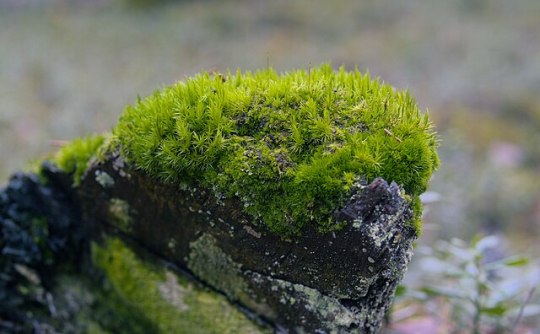
Originally posted on my website at https://rebeccalexa.com/what-are-lithophytes/
Ask most people what plants need to grow in, and they’ll say “soil” or “dirt”, right? And for the majority of terrestrial plants that’s the case. But given the sheer scale of biodiversity and the ability of species to make use of any niche–no matter how small–left unoccupied, there are of course exceptions. Take epiphytes, for example, that cling to the bark of trees and other plants. Rather than drawing nutrients and water from soil, they instead absorb what they need from the air. Psammophytes also get what they need from the air, but instead sink their root system into shifting sand dunes.
I am especially fascinated by lithophytes. “Litho-” means “stone”, and so a lithophyte is simply a plant that grows on stone. There are two main types of lithophyte. Epilithic lithophytes grow on a stone’s surface, and a crevice in the stone may be populated by endolithic lithophytes. Some of these plants can only grow on stone, so they’re described as obligate lithophytes, but their facultative lithophyte neighbors are those that are able to colonize both stone and soil or another substrate at the same time–some lithophytes can even live as tree-dwelling epiphytes instead!
Like epiphytes, a lithophyte may have some ability to absorb water and nutrients from the air. But they also capitalize on anything that ends up washed into their roots by rain. Endoliths may find that over time debris accumulating in their crevice offers a much-needed resource boost. As part or all of a lithophyte dies, the surrounding plants extract nutrients from the decaying matter–nothing goes to waste in nature, after all. They do not, as a general rule, have a negative effect on the rocks themselves; while some rock-dwelling lichens may chemically weather the stone beneath them, lithophytic plants simply use the rock as a convenient surface to take root.
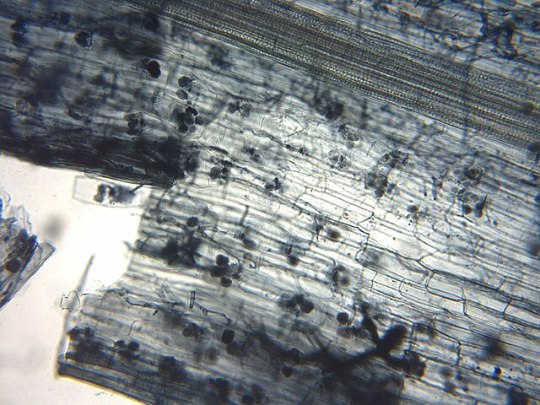
Arbuscular mycorrhizae within a root as seen under a microscope
What I find really cool is that lithophytes can be mycorrhizal! Their roots are pierced by colonies of various arbuscular mycorrhizal fungi that draw up nutrients from the soil and share them with the plants. While this is a very common relationship in nature–four out of every five vascular plant species uses arbuscular mycorrhizal networks–lithophytes seem to have cultivated a greater concentration of these helpful fungi.
A moss-covered rock is often someone’s first encounter with lithophytes. Lacking proper roots, mosses hang onto the stone with tiny rhizomes. Over time they might cover its entire surface, and if said surface is relatively flat and protected from weather and other erosive forces, their decaying remains could be the very beginning of a new patch of soil.
But it’s not just the little bryophytes like mosses that can eke out a living on a rock. More complex vascular plants may also take root on or within stone. One of my favorite ferns, the licorice fern (Polypodium glycyrrhiza) commonly grows as an epiphyte on trees in the Pacific Northwest, but given the right opportunity it will colonize a suitable crevice in a cliff. Orchids may have a reputation for being difficult to care for in captivity, but in the wild there are a lot of lithophytic species. Many, like Dendrobium teretifolium or many Phalaenopsis species, can also live quite well as epiphytes on a tree or other plant. And the wallflower, Erysimum cheiri, got its common name for its tendency to grow out of cracks in rocky slopes.

Nepenthes campanulata
Unsurprisingly, some carnivorous plants make their homes on rocks, and their carnivory allows them access to much-needed nutrients in an otherwise limited setting. The pitcher plant Nepenthes campanulata often grows in colonies on cliff faces. Heliamphora exappendiculata, another pitcher plant, will happily grow both in wetlands and on constantly damp rocks. Sanderson’s bladderwort (Utricularia sandersonii) doesn’t eat insects, but instead sucks up microscopic organisms using bladders the plant buries under nearby soil or sediment.
One more thing: are the plants you see growing in gravel also lithophytes? Not necessarily. There may be soil beneath the gravel that the plant is exploiting. Or the gravel itself may be part of a mineral soil–one that has a lot of stone and not much organic material. A true lithophyte is going to be attached to a rock or rooted in its crevice, though it’s possible to find lithophytes growing on stones that, through weathering, may be feeding fragments into a nearby mineral soil over time.
Did you enjoy this post? Consider taking one of my online foraging and natural history classes or hiring me for a guided nature tour, checking out my other articles, or picking up a paperback or ebook I’ve written! You can even buy me a coffee here!
#lithophytes#botany#plants#science#nature#scicomm#carnivorous plants#moss#fungi#mycorrhizal fungi#mycology#ecology#bryophytes#biodiversity#epiphytes#educational
121 notes
·
View notes
Photo

🌲Thank you for #shoppingsmall at @plantfoundry this weekend! We appreciate you! . We have everything you need to deck the halls— freshly cut Christmas trees from the Pacific Northwest, wreaths, garland, poinsettias, orchids, Christmas Cactus, Lemon Cypress plants, ornaments, great gifts for gardeners, kids, foodies and more. DO NOT MISS OUR BRAND NEW EDIBLE GOURMET MUSHROOM GROWING KITS FROM @farwestfungi in our display refrigerator! . 🚗 Come see us 9-5 today. Remember, street parking in the historic Oak Park @triangledistrict is free… there are several delectable dining choices like @vibehealthbar @lavenaditasac @oldsoulco @fariabakery @thebutterscotchden less than a minute walk from the nursery… unique independent shops like @strappingstore @jambabyshop @shopdisplaycalifornia @herworldxo that are all stocked up for the holidays, with great gifting in mind. 🎁 . 🧖🏻♀️🧖🏾Be sure to take some time for yourself and book a float or sauna or Soma Dome session at @capitolfloats or a haircut, massage, Acutonics or acupuncture session @evergreen_collaborative. Our district’s wellness shops can help you maintain a sense of grounded calm during the often hectic holidays. . Happy Sunday! (at Plant Foundry Nursery & Store) https://www.instagram.com/p/CleOFSYJM0q/?igshid=NGJjMDIxMWI=
0 notes
Photo


Calypso orchids, Calypso bulbosa, are beautiful but pretty tricky to find in the Pacific Northwest. Also called pink fairyslippers and Venus’ slippers, they grow mostly in deeply shaded, undisturbed conifer forests where they depend on mycorrhizal associations with nearby fungi. Their spotted flowers with are meant to trick bees into pollinating them, but give the bees no nectar. Calypso orchids have fairly large, bulbous corms that were eaten by Native Americans in the Pacific Northwest and First Nations peoples in Canada in the past, but generally aren’t used today.
#calypso orchid#calypso bulbosa#pink fairyslipper#venus' slipper#pacific northwest orchid#washington state#wildflower#wild orchid#plants of washington state#botany
94 notes
·
View notes
Text










Awesome hike to Annette Lake, August 9, 2019. 7 miles, 2000-ft gain. Mt. Baker-Snoqualmie National Forest
8 notes
·
View notes
Text




OMG! At the monthly Pacific Northwest Orchid Society Meeting, we were treated to an awesome presentation on mini orchids — orchids that stay teeny forever!
There were so many amazing little jewels to peruse that picking a favorite was basically impossible. Aerangis punctata is on my wish list. I really, really want a Schoenorchis fragrans (plant on the right cork slab) just to flex on having such a small (wearable!?) orchid. For today, however, I just couldn’t resist the allure of Trichoglottis pusilla (plant on the left cork slab). Tiny white flowers with pink stripes, and a fragrance that is apparently divine, what’s not to like?
...maybe the daunting possibility that I may swiftly injure this plant through mistreatment. Ah, that’s what research is for.
#trichoglottis pusilla#schoenorchis fragrans#orchid#seattle#pnos#pacific northwest orchid society#mexipedium!
1 note
·
View note